|
||
      |
Peer Review ::
On the shelf
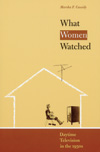 What
Women Watched: Daytime Television in the 1950s, by Marsha F. Cassidy,
AM’71, PhD’79, University of Texas Press, 2005. Passions,
Wheel of Fortune, Oprah, and their ilk sprung from TV’s earliest
days. Tuning in to early American programming, from the “charm boys”—Gary
Moore, Arthur Godfrey, and Art Linkletter—to so-called sob shows,
which asked participants to confess their miseries for a chance to win prizes,
Cassidy uses a close feminist reading to demonstrate how daytime airwaves
were shaped by the postwar era’s cultural ambiguities.
What
Women Watched: Daytime Television in the 1950s, by Marsha F. Cassidy,
AM’71, PhD’79, University of Texas Press, 2005. Passions,
Wheel of Fortune, Oprah, and their ilk sprung from TV’s earliest
days. Tuning in to early American programming, from the “charm boys”—Gary
Moore, Arthur Godfrey, and Art Linkletter—to so-called sob shows,
which asked participants to confess their miseries for a chance to win prizes,
Cassidy uses a close feminist reading to demonstrate how daytime airwaves
were shaped by the postwar era’s cultural ambiguities.
Cultures of Transnational Adoption, edited by Toby Alice Volkman, AB’69, Duke University Press, 2005. During the 1990s American families adopted some 140,000 children from other countries—a trend that has increased throughout the wealthy West. In this collection, contributors explore questions of race, nationality, kinship, biology, and belonging, along with the politics of the exporting and importing nations.
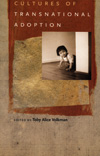 Repression
and Resistance: Canadian Human Rights Activists, 1930–1960,
by Ross Lambertson, AM’68, University of Toronto Press, 2005. Before
the rise of the modern human-rights movement, activists combatted what they
saw as government abuses, wartime and otherwise. In the mid-20th century,
Canadian protesters fought civil-liberties violations during WW II, the
postwar deportation of Japanese Canadians, Cold War restrictions, and discrimination,
struggling to obtain a Bill of Rights. Lambertson shows how members of ethnic,
labor, religious, and civil-libertarian organizations campaigned for human
rights.
Repression
and Resistance: Canadian Human Rights Activists, 1930–1960,
by Ross Lambertson, AM’68, University of Toronto Press, 2005. Before
the rise of the modern human-rights movement, activists combatted what they
saw as government abuses, wartime and otherwise. In the mid-20th century,
Canadian protesters fought civil-liberties violations during WW II, the
postwar deportation of Japanese Canadians, Cold War restrictions, and discrimination,
struggling to obtain a Bill of Rights. Lambertson shows how members of ethnic,
labor, religious, and civil-libertarian organizations campaigned for human
rights.
Indivisible by Two: Lives of Extraordinary Twins,
by Nancy Segal, AM’74, PhD’82, Harvard University Press, 2005.
Gerry and Mark are twins raised apart who both became firefighters. Agnes
and Audrey were identical sisters until Audrey underwent a sex-change operation.
Oskar and Jack are half-Jewish twins, one raised as a Jew in Trinidad, the
other a 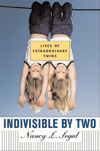 member
of the Hitler Youth. These unusual families, and nine others, are included
in this anecdotal study by Segal, a psychology professor and director of
the Twin Studies Center at California State University, Fullerton.
member
of the Hitler Youth. These unusual families, and nine others, are included
in this anecdotal study by Segal, a psychology professor and director of
the Twin Studies Center at California State University, Fullerton.
A Time of Liberty: Popular Political Culture in Oaxaca, 1750–1850, by Peter Guardino, AB’85, AM’86, PhD’92, Duke University Press, 2005. Latin America’s sometimes rocky road to democracy has its roots in the 1700s. Guardino examines Spanish colonies’ shift from monarchy to independence and republican ideas of citizenship. Contrasting the experience of two areas of Mexico—mestizo, urban Oaxaca City and indigenous, rural Villa Alta—he explores citizen participation in the transformation.
Challenging the Daley Machine: A Chicago Alderman’s
Memoir, by Leon M. Despres, PhB’27, JD’29, with Kenan
Heise, Northwestern University Press, 2005. While corruption and cronyism
may have defined Chicago politics during the late Richard J. Daley’s
mayoral reign, Despres spared no opportunity to throw a wrench into the
machine. In this political memoir, Despres 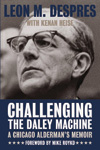 recalls
his 20 years as alderman, fighting malfeasance in the sale of city permits,
the destruction of landmark buildings, and racial discrimination, frequently
facing 49-to-1 defeats in Chicago’s city council.
recalls
his 20 years as alderman, fighting malfeasance in the sale of city permits,
the destruction of landmark buildings, and racial discrimination, frequently
facing 49-to-1 defeats in Chicago’s city council.
Life Could be Sweeter: 101 Great Ideas from Around the World for Living a More Rewarding Life, by William Sinunu, AM’95, Marlowe & Company, 2005. Two young Norwegians eliminate clutter with a sense of lagom—”enough.” Cuban parents learn to set limits and devote time to their children. French couples spice up their sex lives with surprises. Sinunu, a flight attendant for nearly 20 years and a licensed social worker, has collected a series of international lessons for the overstressed, overworked, overeating, or overweening American.
The Sacred Village: Social Change and Religious Life in Rural North China, by Thomas David DuBois, AB’91, AM’91, University of Hawaii Press, 2005. In what was once an isolated worldview, rural Chinese religious knowledge derived from local stories of divine revelations, cures, and miracles. With the opening of China’s borders, external influences have transformed local worship. Using Cang County, in Hebei Province, as a lens for rural change, DuBois documents two centuries of evolving religious life.
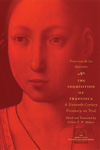 The
Inquisition of Francisca: A Sixteenth-Century Visionary on Trial,
edited and translated by Gillian T. W. Ahlgren, AM’86, PhD’91,
University of Chicago Press. Inspired by visions, in 1573 Francisca de los
Apóstoles and her sister tried to organize a beaterio, a
lay community of pious women, to minister to the poor and call for ecclesiastical
reform. She was denounced to the Inquisition, arrested, and tried for religious
fraud. Ahlgren has compiled Francisca’s letters and a transcript of
her trial and unsuccessful defense.
The
Inquisition of Francisca: A Sixteenth-Century Visionary on Trial,
edited and translated by Gillian T. W. Ahlgren, AM’86, PhD’91,
University of Chicago Press. Inspired by visions, in 1573 Francisca de los
Apóstoles and her sister tried to organize a beaterio, a
lay community of pious women, to minister to the poor and call for ecclesiastical
reform. She was denounced to the Inquisition, arrested, and tried for religious
fraud. Ahlgren has compiled Francisca’s letters and a transcript of
her trial and unsuccessful defense.